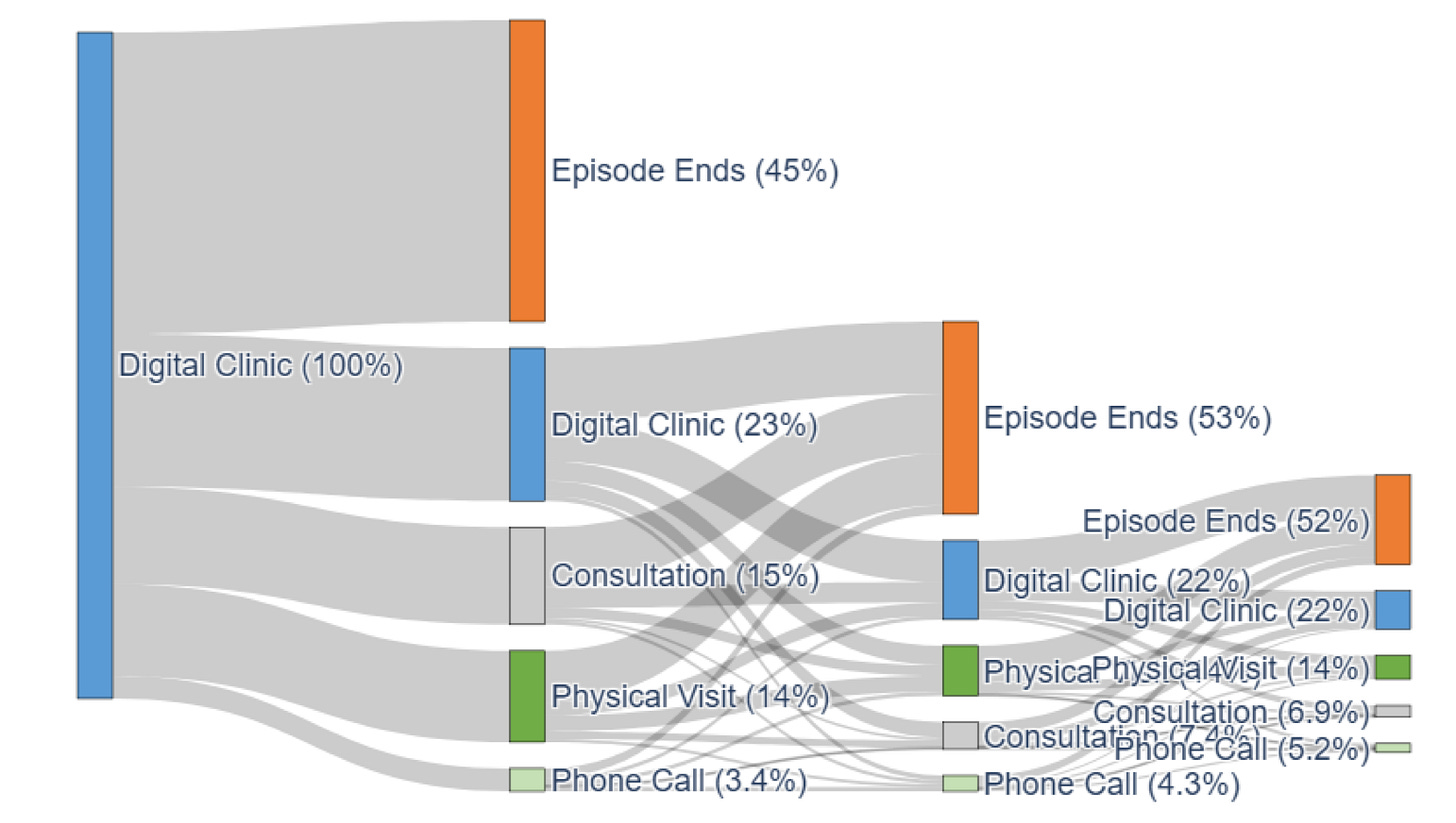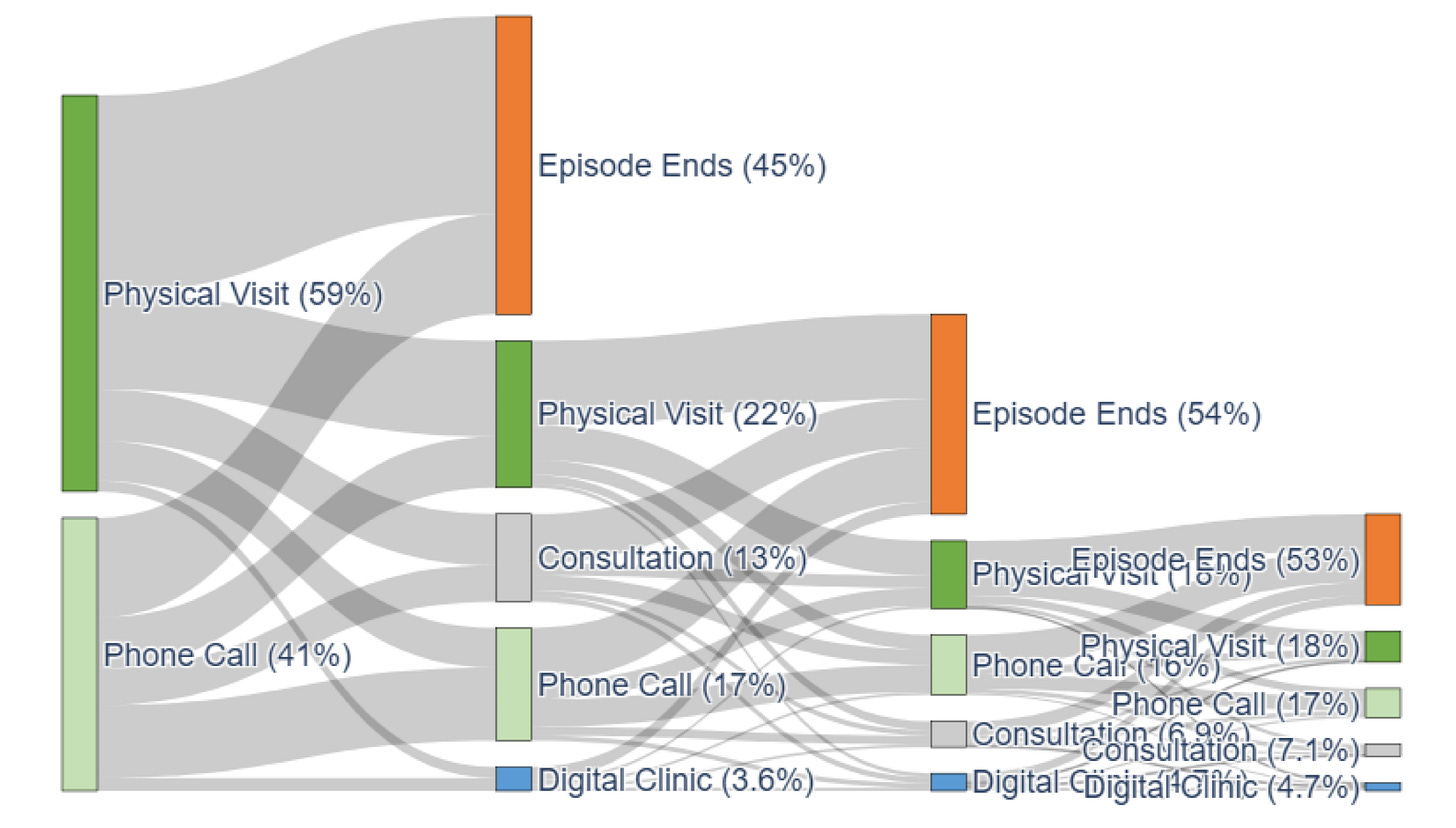Where Do "Digital First" Patients End Up?
They mostly stay digital, and that's probably a durable cost savings.
These folks from Finland have published a mildly interesting “cost minimization” analysis of “digital-first” pathways in primary care. The actual analysis is, however, not the interesting bit. That part is based on a propensity-matched analysis where there are still, obviously, unmeasured and important differences between groups. Then, the manuscript is written by the same folks who developed the app, so the reliability of their claimed cost savings is a fair question.
However, in the Supplementary Information, there are a few interesting Sankey diagrams illustrating the healthcare journey of folks who start either by accessing care through the app, or through the traditional in-person or phone-consultation primary care pathway.
The digital access folks look like this:
As compared to the traditional access folks:
It’s fairly interesting how little crossover there is, even in the scope of follow-up appointments.
It makes perfect sense some digital-first visits would require an in-person follow-up, but it seems as though there are probable missed opportunities to convert folks on the physical stream to the digital pathway. This is most relevant to integrated or single-payer health systems, where diverting patients from higher-resource in-person visits might ultimately be more effective use of limited healthcare dollars.


